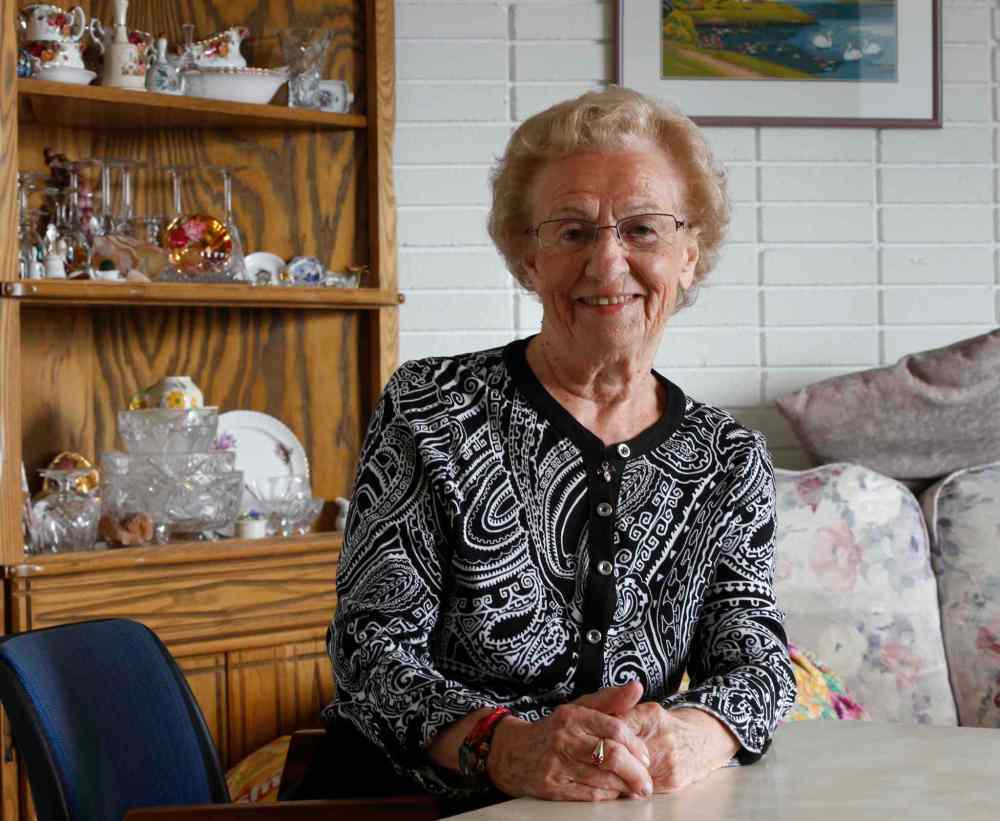Preparing for a grey tsunami
Advertisement
Read this article for free:
or
Already have an account? Log in here »
To continue reading, please subscribe:
Monthly Digital Subscription
$0 for the first 4 weeks*
- Enjoy unlimited reading on winnipegfreepress.com
- Read the E-Edition, our digital replica newspaper
- Access News Break, our award-winning app
- Play interactive puzzles
*No charge for 4 weeks then price increases to the regular rate of $19.00 plus GST every four weeks. Offer available to new and qualified returning subscribers only. Cancel any time.
Monthly Digital Subscription
$4.75/week*
- Enjoy unlimited reading on winnipegfreepress.com
- Read the E-Edition, our digital replica newspaper
- Access News Break, our award-winning app
- Play interactive puzzles
*Billed as $19 plus GST every four weeks. Cancel any time.
To continue reading, please subscribe:
Add Free Press access to your Brandon Sun subscription for only an additional
$1 for the first 4 weeks*
*Your next subscription payment will increase by $1.00 and you will be charged $16.99 plus GST for four weeks. After four weeks, your payment will increase to $23.99 plus GST every four weeks.
Read unlimited articles for free today:
or
Already have an account? Log in here »
Hey there, time traveller!
This article was published 05/10/2015 (3686 days ago), so information in it may no longer be current.
There is a reason federal party leaders are meeting elderly Canadians on their campaigns. Older people vote in high numbers; much higher than younger Canadians. And now, Statistics Canada figures show, the country is aging, slowly but surely, giving senior citizens power at the polls.
The number of people 65 and older crossed a threshold in 2014, comprising just a slightly greater proportion than Canadians 14 and younger. That means public policy — and vote-buying promises — are increasingly focused on the realities and demands of an aging population. Older Canadians marking ballots Oct. 19 will choose among party pledges that boost tax credits and incomes for senior citizens, ensure they can live longer in their own homes or, when the time comes, be assured there’s a bed in a nursing home waiting for them.
Canadians should get used to seeing their taxes spent on services to elderly people, because the trend shows that age group is where the growth is. In fact, demographers forecast in a decade’s time, those 65-plus will make up more than 20 per cent of the population.

The rise of the grey wave — a tsunami some have said — has implications, such as fewer young people working, paying the taxes and pension premiums that fund services and programs for everyone, including the retired.
Top of mind is the health-care system, which will have to serve a larger number of Canadians at the ages when the use of hospitals and family doctors intensifies. By 2036, the Canadian Medical Association predicts, 62 per cent of health budgets in the country will be spent on the elderly.
There was no surprise, then, that Tom Mulcair homed in on dementia as a priority for an NDP government, forming a strategy to screen for and treat it and to help families care for the afflicted.
Manitoba appears to have a little more time to prepare for an aging population. Rising immigration and a high First Nations population (disproportionately young) have helped keep the province young as baby boomers move into retirement age. And so this province has to work to ensure young people are educated, trained and ready for the jobs.
But it also has work to do to ensure the health system, most immediately, can meet the demand. A new survey done by the Canadian Institute of Health Information shows that might be a challenge, especially as it relates to the elderly. Manitoba saw more physicians than other provinces leave to work elsewhere in the country, and most of them were family doctors — the go-to medical professional right now for the elderly.
That’s remarkable in that family doctors are paid better here, on average, than in other provinces. (Alberta paid the most in 2014, but that was also true of specialists, who seem to be staying in Manitoba.)
But there’s only so much the health system — and the provincial treasury that sustains it — can do. The evidence is the elderly today are healthier, and wealthier, than were their parents. Keeping fit and sticking to a healthy lifestyle while aging is the best bet for living longer in good health. And that is where more effort of government departments and health professionals should be focused — pushing exercise, not pills.
It’s natural for Canadians to look to their governments to direct spending on services and programs suited to the needs of the country. And that is particularly true of the big priorities — meeting the need for skilled labour, preparing for chronic diseases, adequate and appropriate housing or income supports.
But no one needs a politician to tell us what happens to spending — and taxes — if a disproportionately older population is a sicker, disabled population.
History
Updated on Monday, October 5, 2015 7:32 AM CDT: Replaces photo












